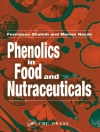Enables readers to convert lignin using a variety of depolymerization methods and develop it into industrially relevant and functional compounds
Depolymerization of Lignin to Produce Value Added Chemicals summarizes the depolymerization and utilization of lignin from different sources and covers the emerging field of biological depolymerization, enabling the reader to identify the high added value of a biomass residue and support him/her in its possible use for mass and niche hig...
Enables readers to convert lignin using a variety of depolymerization methods and develop it into industrially relevant and functional compounds
Depolymerization of Lignin to Produce Value Added Chemicals summarizes the depolymerization and utilization of lignin from different sources and covers the emerging field of biological depolymerization, enabling the reader to identify the high added value of a biomass residue and support him/her in its possible use for mass and niche high impact application sectors.
Lignin has great potential to significantly improve the economics of a biorefinery due to its conversion into value-added products. To illustrate, this book includes information on:
* Feasibility of large-scale implementation of covered technologies, including thermal, biological, and chemical depolymerization, especially in relation to potential industrial applications
* ‘Lignin-first’ biorefining approach, and potential applications of lignin-derived monomers and their derivatives as bioactives in food, natural health products, and pharmaceuticals
* Business and market scenarios and challenges that intersect with lignin, along with perspectives on lignin valorization
* Benefits and drawbacks of a lignin-first approach to biorefining, and techno-economic considerations of lignin and its applications
Depolymerization of Lignin to Produce Value Added Chemicals is an essential resource for researchers, chemists, engineers, analysts, and consultants within universities, independent research organizations, and government.












